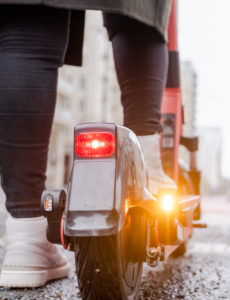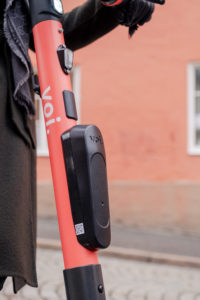Swedish micromobility operator Voi has introduced its latest e-scooter model, which comes with a range of new features including pollution-sensing technology.
Voiager 4 (V4) has been designed not only to contribute to pollution reduction but also to collect air quality data to help cities make environmental decisions.
The e-scooter has optional smart pollution sensors, as well as noise and light sensors, to help identify areas of poor air quality and high levels of noise pollution.
Richard Corbett, regional general manager for UK, Ireland & Benelux at Voi Technology, said: “We know that our communities require greener, convenient transport to replace shorter-distance car trips and reduce congestion.
“The new features, designed in-house, will bring superlative overall performance in safety, efficiency, and sustainability to help our communities meet their transportation needs.”

V4 is also Oyster card compatible to aid integration into existing transport systems and can be unlocked with contactless NFC (Near Field Communication) technology by tapping a smartphone, smart watch or transport card.
V4 also features turn indicators, a reinforced fender and improved hydraulic suspension, as well as widened solid 10” tyres to increase shock absorption and ease impact from cobblestones and potholes.
According to Voi, its latest e-scooter is suitable for use in all weathers and has the ability to withstand submersion in water up to a depth of 1m 30cm for up to 30 minutes, due to the IPX7 rating of its electronic enclosures.
To improve location accuracy, the V4 has new IoT (Internet of Things) hardware, which compensates for lost or degraded GNSS satellite signals. The IoT uses dual-band GNSS (L1 and L5 bands), which compares and averages the two signals, to minimise positioning errors and prevent signals being affected by urban features such as tall buildings or trees, or by atmospheric disruptions.

Additionally, the IoT solution accesses corrections from the European Geostationary Navigation Overlay Service (EGNOS), provided by the European Space Agency.
When GNSS-only positioning is difficult or impossible, the IoT combines information from various sensors, including gyro sensor, accelerometer and scooter speed to calculate the scooter’s current position. Thus, the V4 includes a dedicated slot for extra sensor devices, expanding the IoT’s future capabilities.
Furthermore, the V4’s intelligent system conducts automatic diagnostic checks that predict the need for maintenance or repairs. It can identify 55 unique error conditions, which, if triggered, instantly makes the e-scooter unavailable to hire and alerts Voi’s operations team.
Voi will introduce the V4 to select UK markets this spring, with broader rollout later in 2021.





